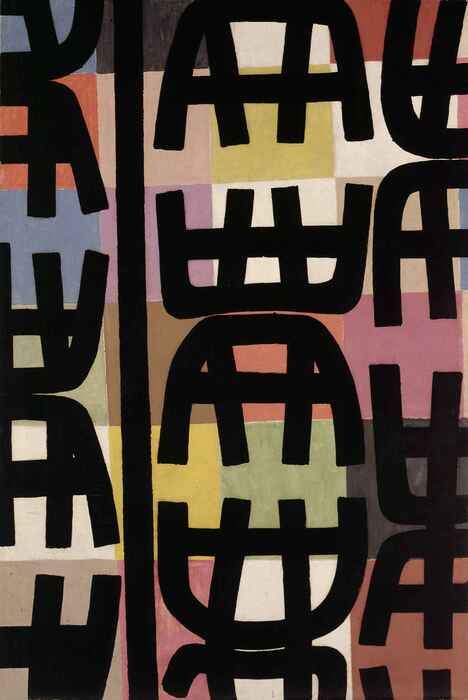Master of tonal research in the Thirties and of abstract art after the end of the Second World War.
Fifty years after his death, the National Gallery of Modern Art in Rome pays homage to Giuseppe Capogrossi with the great exhibition that documents the path of a champion of the informal.
'' Capogrossi.
Behind the scenes '', from 20 September to 6 November curated by Francesca Romana Morelli, also marks the start of the program of exhibitions and events to remind him that in October they will involve 25 Italian museums and institutions with meetings, conferences and workshops.
'' Capogrossi was with Lucio Fontana and Alberto Burri among the roots of Italian art of the second half of the twentieth century - explains the curator -.
His sign opened to a universal language.
Through the process of his painting and his sign that relates to the space of the surface, he wanted to invite man to go beyond the ordinary gaze of things in a condition of total freedom ''.
On display over thirty paintings and about twenty works on paper chosen from his collections, which preserve the most conspicuous nucleus of the artist's works, from the Archive Foundation and from private collections.
To the story are added documents from the master's documentary collections kept in the Archive of the Gallery and by the Foundation, photographic portraits with prominent figures of the time, exhibition catalogs, magazines, letters and newspaper articles.
The project conceived by the Capogrossi Archive Foundation and curated by Patrizia Rossazza Ferraris to celebrate him in a more articulated and widespread way next month - the artist died in Rome on 9 October 1972 - will instead be an opportunity to take stock of his work and on what is left of him in public institutions and museums.
"Among the painters of today you are one of the few who are much more concerned with the form than with the picture; and they realize that, to save the first, it may be necessary and in any case makes it possible to sacrifice the second '' he wrote in a letter from Giulio Carlo Argan in 1954 after having visited the room entirely dedicated to him at the Venice Biennale. '' I think that your position, even if some might consider it obstinately secluded and abstractly contemplative,
be generous and humane.
It is always a pleasure to find his most authentic moral qualities in a friend's painting;
and of this, no less "added the illustrious art historian. The exhibition - Morelli observes - embraces the artist's first pictorial season, culminating in the tonal period, with the subsequent phase, in which the works function like the tessere di un puzzle, '' without following a chronological order, but rather assonances in the compositional structure, make visible the authentic Saturnian physiognomy of the artist, who since the thirties, filters his painting with a logic and a mental rigor, showing to be always listening to himself and constantly observing the outside world, staying out of established routes ".
Among the works on display,
a selection of paintings that have long been missing such as Surface 274, from 1954, and Self-portrait with Emanuele Cavalli (about 1927).
The two artists were linked by a strong friendship and an idea of art which in 1933 led them to sign, with Roberto Melli, the manifesto of Plastic Primordialism focused precisely on tonalism.
Their paths divided after the end of the Second World War when Capogrossi, like many other painters, turned towards abstractionism.
Winter landscape (1935) describes life from the terrace of a building in the Prati district, where Capogrossi had his studio, but also refers to the '' pure and desolate staging of human life ''.
Among others, the impressive Surface 419 (circa 1950) and Surface 106 (1954) stand out,
belonged to the architects Luigi Moretti and Vincenzo and Edoardo Monaco, who played a decisive role in the artistic and human story of Capogrossi.
One room is dedicated to the White Reliefs, conceived in the sixties, which demonstrate his incessant desire for experimentation.
Finally, the large Abstract tapestry (1963), designed for the Turbonave Michelangelo.

